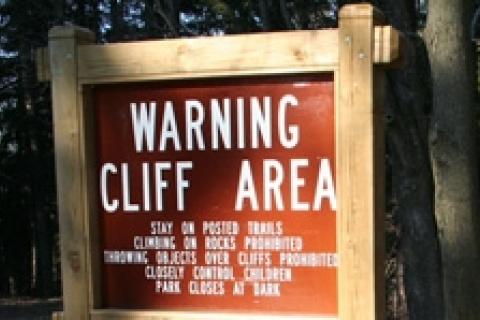
 Hiking is considered by some, a leisure walk, or aggressive trek, with no real planning necessary, especially on an established trail. That thinking has led to hundreds of unexpected overnight stays in the wild, injuries and even deaths. A couple weekends ago, two such accidents made the news in southeastern Ohio. The two separate incidents that occurred at the popular Hocking Hills region left a young woman in serious condition and the other took the life of a teen. Both tragedies occurred when both hikers went off trail and fell from cliffs.
Hiking is considered by some, a leisure walk, or aggressive trek, with no real planning necessary, especially on an established trail. That thinking has led to hundreds of unexpected overnight stays in the wild, injuries and even deaths. A couple weekends ago, two such accidents made the news in southeastern Ohio. The two separate incidents that occurred at the popular Hocking Hills region left a young woman in serious condition and the other took the life of a teen. Both tragedies occurred when both hikers went off trail and fell from cliffs.
Many trails wind through scenic landscapes that skirt along river gorges, rock formations or cliffs. Even trails that explore more tame landscapes are often flanked by warning signs to stay on the trail. Deviating from designated trails is never a good idea. Trailside signage informs of any dangers and natural habitat that should not be disturbed. When posted warning signs are absent, a good dose of common sense is needed.
The simplest hike should at least have a few thoughts of pre-planning to ensure a pleasant experience. Taking things such as orienteering for granted can lead to trouble. How could you get lost on a small loop trail or other short hike? Well, it has happened. An attraction or distraction along an established trail such as the sound of running water just out of sight or wildlife "almost" within camera range, can lead a hiker astray. The golden rule to hiking established trails is to stay on the trail — simple as that. Not only will side tripping create a possible emergency for the hiker, the new path may encourage others to follow which may lead to erosion or impact wildlife habitat.
Use a map when possible. Adding a map to your daypack will keep you informed of interesting points of interest along the way. A topographical map is best, especially when planning for physical limitations. Any steepness of the trail will be obvious on the "topo" map, which will distinguish any surprises about incline and decline contours of the targeted trail. A map is also handy for plotting notes as you travel along — references for future hikes or to pass info on to fellow hikers considering the trail.
It's easy to get excited about what's around the next bend in the trail. Or while standing on the trail, the desires to get a closer look at the view from the cliff edge. But if a trip or slip occurs, the adventure quickly can become a disaster. The wonders of the wild are fascinating and walking among it is inspirational. Doing so with a bit of preparation and good judgment leads to a fantastic experience. If not, another shocking headline may reveal another senseless hiking tragedy.
- 2603 views

